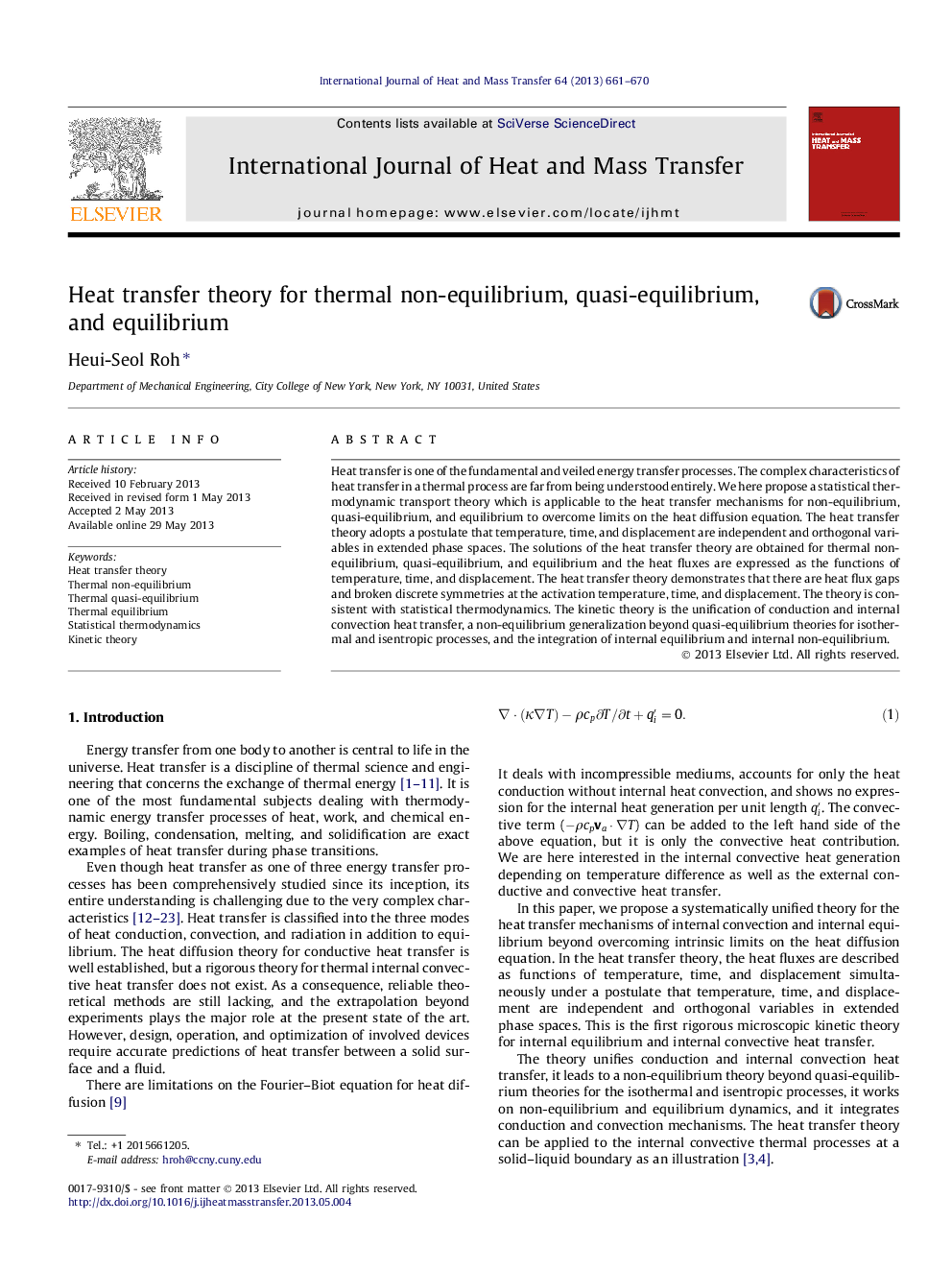| Article ID | Journal | Published Year | Pages | File Type |
|---|---|---|---|---|
| 7058849 | International Journal of Heat and Mass Transfer | 2013 | 10 Pages |
Abstract
Heat transfer is one of the fundamental and veiled energy transfer processes. The complex characteristics of heat transfer in a thermal process are far from being understood entirely. We here propose a statistical thermodynamic transport theory which is applicable to the heat transfer mechanisms for non-equilibrium, quasi-equilibrium, and equilibrium to overcome limits on the heat diffusion equation. The heat transfer theory adopts a postulate that temperature, time, and displacement are independent and orthogonal variables in extended phase spaces. The solutions of the heat transfer theory are obtained for thermal non-equilibrium, quasi-equilibrium, and equilibrium and the heat fluxes are expressed as the functions of temperature, time, and displacement. The heat transfer theory demonstrates that there are heat flux gaps and broken discrete symmetries at the activation temperature, time, and displacement. The theory is consistent with statistical thermodynamics. The kinetic theory is the unification of conduction and internal convection heat transfer, a non-equilibrium generalization beyond quasi-equilibrium theories for isothermal and isentropic processes, and the integration of internal equilibrium and internal non-equilibrium.
Related Topics
Physical Sciences and Engineering
Chemical Engineering
Fluid Flow and Transfer Processes
Authors
Heui-Seol Roh,
